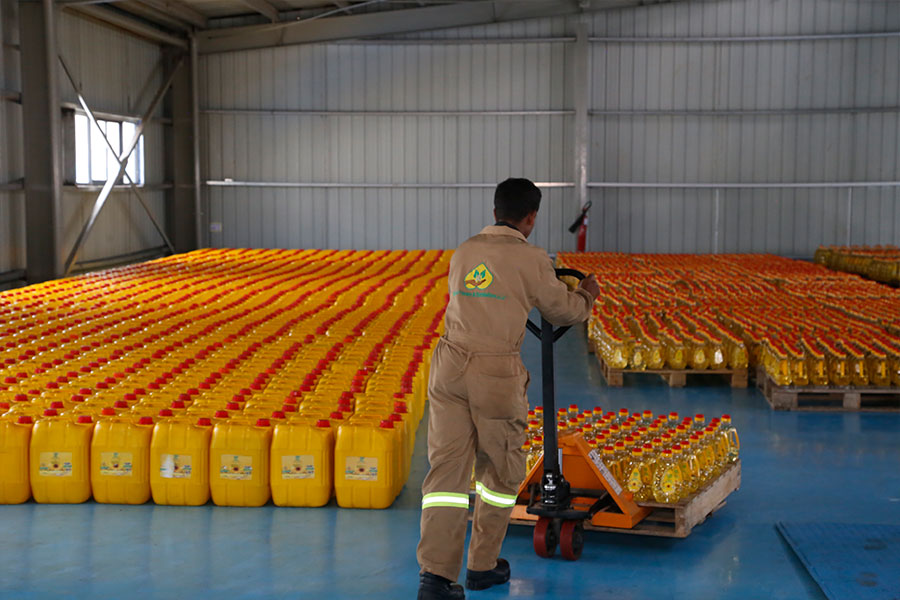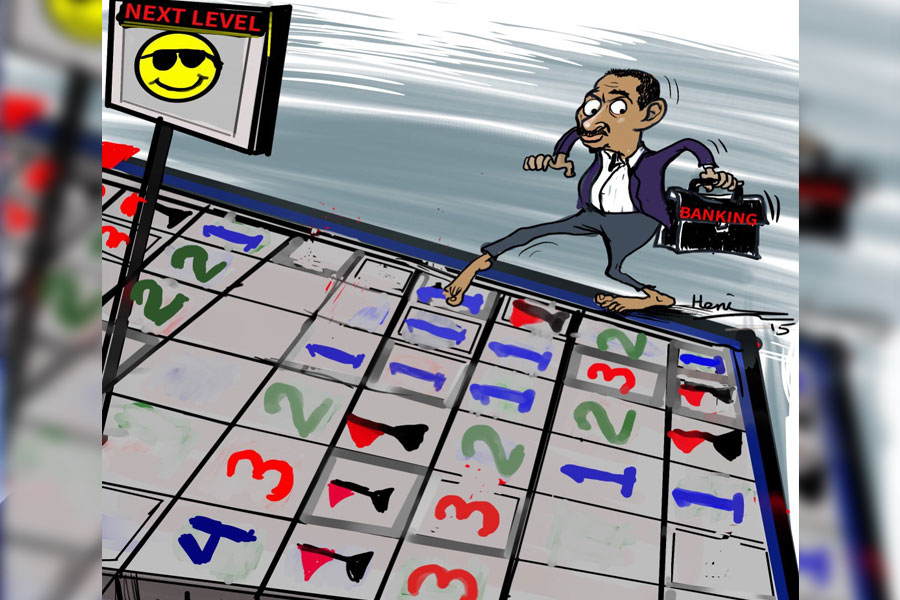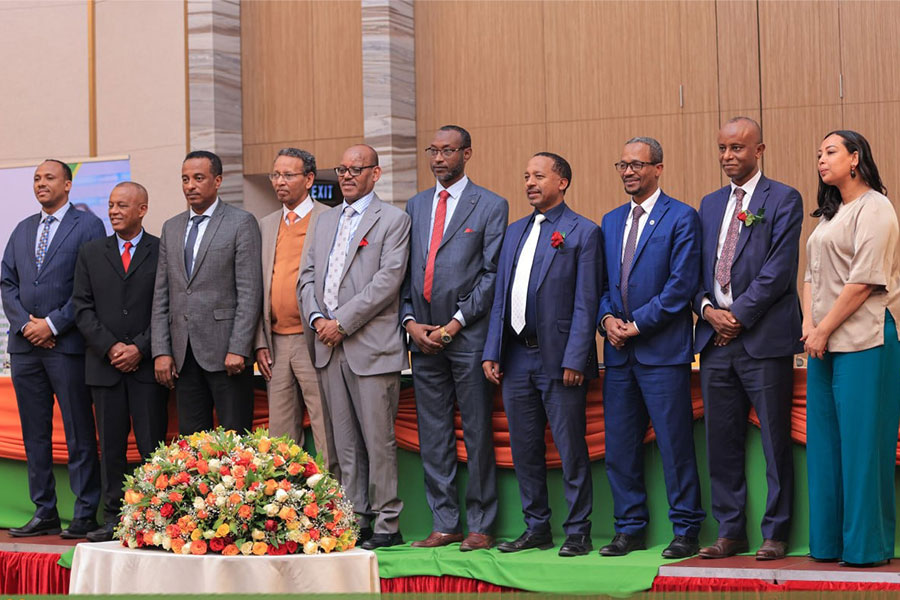
Fortune News | May 25,2019
Oct 24 , 2020
By Ayele Tirfie Woldemichael
The 10-year economic plan is critical to realising development in the country. But there are a set of challenges that need to be recognised and preconditions that have to be fulfilled to realise success, writes Ayele Tirfie Woldemichael (Prof.), author of several books and an alumnus of Oregon State University and the University of Stuttgart.
The government has put a national 10-year development plan forward for discussion. Ministries have been holding forums for their respective industries and sectors, while the Planning & Development Commission has been promoting an economic transformation plan expected to guide the country until 2030.
It is evident that long-term 10-year plans such as this are critical in economic policymaking. The merits accrue in its value in giving long-term direction and vision about the envisioned pursuit of the nation’s growth and development and comprehensive coverage of all major aspects of the nation’s economy. It also allows for the identification of core sectors of the economy for targeted allocation and optimal utilisation of resources for creating complementarities between the sectors for integrated and effective progress.
A 10-year plan will also set the preconditions for coordination of the workings of both public and private investment through forecasts and targeted outputs.
But there is a need to build on the implementation of the 10-year plan by translating it into two three-year and one four-year plan or into two five-year plans, whichever is acceptable to the national planning organ, the Commission. This measure creates possibilities for periodic assessment of progress stretching over the subdivided and consecutive plan periods, eventually leading to the overall success of achievement at the end of the 10 years.
The timeless principle affirms that success is the ultimate measure of performance. But this will not occur in a vacuum. There are prerequisite measures that need to be taken to make the planning successful, including a critical assessment of the current or existing state of the socioeconomic conditions in the country to establish the reality as a point of departure.
While the federal government discharges its responsibility of developing physical and social infrastructure in all its forms, there should be a participative or inclusive review of both the draft plan and full participation in the implementation process involving the private sector, the regional and local authorities and, if possible, the communities at the grassroots level.
Building institutional capacities or competencies at all levels of the hierarchical system in tandem with staffing them by human resources equipped with high-quality knowledge and skills is just as critical. These are basic for effective implementation.
The plan implementation also needs to be decentralised with sectoral coordination at national and regional levels. Growth and development under regional or decentralised - harmonised top-down, bottom-up - planning approaches are the outcome of shared responsibilities and coordinated efforts between the planning organs of the national and regional players. Regional development is inherently resource-based, need-oriented, participative and people-centred.
Critical to the whole process is constant monitoring and milestone-based evaluations during the process of implementation of the plans. The outcome of evaluation at each milestone provides lessons or feedback to be of use in each following stage within the implementation process. Also, careful study of socioeconomic conditions and forecasting for each of the remaining plan periods would serve as an instrument of feedforward.
Challenges will abound during the implementation process without a doubt. Some of the major ones are deficiencies in the plans and in the implementation process and poor or wasteful resource utilisations. It could also be institutional weakness and low-level human capacities that could lead to delays in reacting to symptoms or indications of impending failures. An underdeveloped service sector consisting of financial services, public administration, transportation-cum-communication, the legal system, touristic services, health and education may also complicate the planning beyond what is required.
There are other critical bottlenecks to be recognised in Ethiopia. One of the major ones concerns how the nation’s urban centres are characterised by a skewed distribution across the national space and low economic significance taken on their own. Many are not centres of generative or value-adding industries capable of creating jobs and wealth. The prevailing realities in the urban centres are - despite the massive potential and gradual growth - informal businesses, poverty and inequality. With the existing poor urban qualities and low agricultural productivity, economic interactions between the two sectors are at best rudimentary and at worst non-existent.
The simultaneous existence of growth and poverty is no small matter as well, as is the disparity between economic benefits and social services including quality health and education. The relegated improvement of rural economic performance will be another headache that planners will have to deal with.
PUBLISHED ON
Oct 24,2020 [ VOL
21 , NO
1069]


Fortune News | May 25,2019

Fortune News | May 24,2025


Commentaries | Apr 26,2025

Fortune News | Mar 05,2022

Fortune News | Jan 23,2021

Fortune News | Jul 08,2023

Editorial | May 27,2023

Commentaries | Mar 11,2023

Radar | Sep 22,2024

My Opinion | 132038 Views | Aug 14,2021

My Opinion | 128435 Views | Aug 21,2021

My Opinion | 126362 Views | Sep 10,2021

My Opinion | 123981 Views | Aug 07,2021





Dec 22 , 2024 . By TIZITA SHEWAFERAW
Charged with transforming colossal state-owned enterprises into modern and competitiv...

Aug 18 , 2024 . By AKSAH ITALO
Although predictable Yonas Zerihun's job in the ride-hailing service is not immune to...

Jul 28 , 2024 . By TIZITA SHEWAFERAW
Unhabitual, perhaps too many, Samuel Gebreyohannes, 38, used to occasionally enjoy a couple of beers at breakfast. However, he recently swit...

Jul 13 , 2024 . By AKSAH ITALO
Investors who rely on tractors, trucks, and field vehicles for commuting, transporting commodities, and f...

Jul 12 , 2025
Political leaders and their policy advisors often promise great leaps forward, yet th...

Jul 5 , 2025
Six years ago, Ethiopia was the darling of international liberal commentators. A year...

Jun 28 , 2025
Meseret Damtie, the assertive auditor general, has never been shy about naming names...

Jun 21 , 2025
A well-worn adage says, “Budget is not destiny, but it is direction.” Examining t...

Jul 13 , 2025 . By YITBAREK GETACHEW
The Addis Abeba City Revenue Bureau has introduced a new directive set to reshape how...

Jul 13 , 2025 . By BEZAWIT HULUAGER
Addis Abeba has approved a record 350 billion Br budget for the 2025/26 fiscal year,...

Jul 13 , 2025 . By RUTH BERHANU
The Addis Abeba Revenue Bureau has scrapped a value-added tax (VAT) on unprocessed ve...

Jul 13 , 2025 . By NAHOM AYELE
Federal lawmakers have finally brought closure to a protracted and contentious tax de...